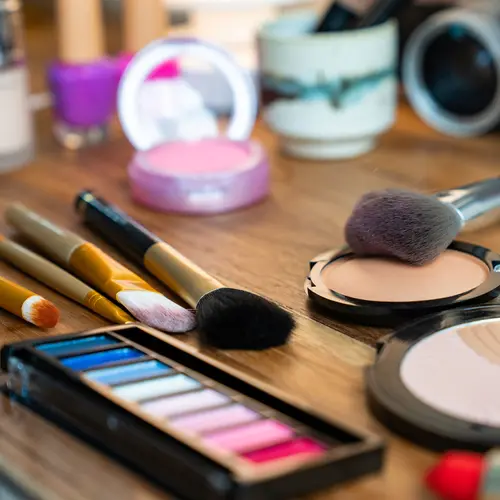No matter how practiced you are at shaving, one wrong movement or angle could result in a cut. It can happen so subtly that you don’t even know exactly what you did to nick yourself. Shaving wounds usually are superficial, but they can be messy and annoying to patch up — especially if they’re somewhere visible. Understanding more about shaving techniques, different kinds of razors, and more can help you shave without cutting yourself.
How to Shave Without Cutting Yourself
Hair grows all over the body with the exception of a just few places, and that same hair can be shaved from just as many places. For the majority of body parts on both men and women, the steps to getting a close shave are the same:
- Get your skin and hair wet to make the area soft and slick. Many people like to shave right after or during a shower because the skin is warm, hydrated, and clean from oil and dead skin buildup that could clog your razor. Exfoliating decreases razor clogging and increases the razor’s efficiency.
- Put shaving cream, gel, or some kind of lubricant on the skin. If your skin is extra dry or sensitive, you can protect it by using a cream designed for your skin type. Though it’s common for people to use soap and water when shaving, this often leaves the skin dry and flaky. Using a shaving cream — or even hair conditioner or body oil — will help you get a close shave and will help your skin feel soft and hydrated afterwards.
- Observe the direction your hair is growing. Shaving in the opposite direction that your hair is growing will give you a closer shave (for example, for hair on your legs that grows downward towards your feet, shave upward toward the knee). But shaving in the same direction as your hair is growing will prevent ingrown hairs and skin irritation.
- After each swipe, rinse the hair and buildup out of your razor.
- After you're finished shaving, rinse the freshly smooth area with cold water to close pores, remove leftover extra shaving cream, and rinse away leftover hair or dead skin.
- Keep your razor in a dry spot in between shaves. Replace your razor regularly. If buildup of skin and hair don’t wash out in a stream of water, it might be time for a new razor.
One of the most important things you can do to protect against cuts while shaving is to lubricate your skin. If you dry shave, your chances of cuts or irritation increase significantly.
Shaving With Acne
Acne typically appears on the face and can come in several forms — whiteheads, blackheads, cystic acne, and more. Regardless of what kind of acne you have, it can be a pain to navigate while you try to shave. Shaving with acne requires more attention and the right tools.
Follow the general steps mentioned above, in addition to the following tips:
- Cleanse the skin before lubricating it. Using an anti-acne cleanser will give you a great, non-irritated surface to start with.
- Use an electric razor or a safety razor. A safety razor is any razor with a protective device between the blade and your skin. These days, disposable razors are the most popular type of safety razor. Make sure the blade is sharp; dull blades will tug at your skin and acne.
- Shave with the grain. Shaving in the direction your hair grows will help prevent ingrown hairs that could contribute to acne and skin irritation, which in turn make it harder to shave without cutting yourself.
- When you shave, do it lightly. If you apply pressure, your razor is likely to catch on your acne, cut your skin, and make your acne worse.
What Kind of Razor to Use
There is an overwhelming number of razor options available, but what will be least likely to cut you? Your best options are an electric razor and a standard multiblade razor. Shaving with an electric razor is easy and generally safe when it comes to cuts, but you won’t get as close or accurate a shave.
A standard razor with a fresh, sharp blade is a good option for getting a close shave and avoiding cuts, and a razor with a pivoting head will make shaving tricky curved areas easier.


